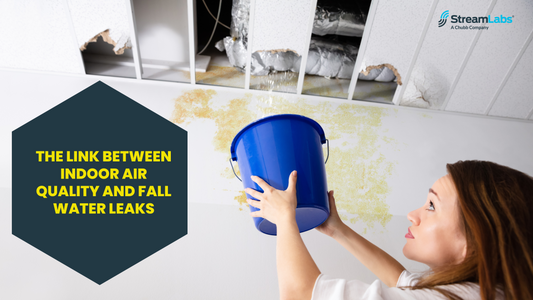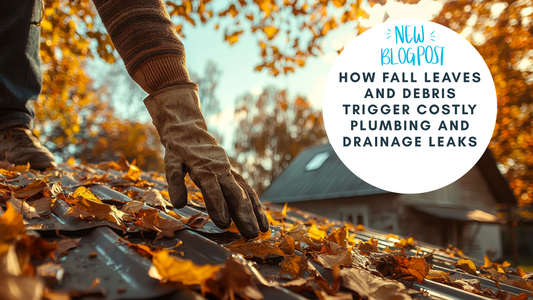Learn seven simple ways to help protect future generations and the environment by reducing your household’s water usage.
Each year, people around the world recognize March 22nd as World Water Day. Inaugurated by the United Nations, this global holiday reminds us of the importance of making fresh water accessible to all people and encouraging the sustainable management of freshwater resources.
Water Conservation is Everyone's Responsibility.
Water is indispensable to life on Earth. For 1.5 billion people (almost half of the world’s workers), the availability of fresh water is essential to their jobs. Besides keeping living things alive, water plays an essential role in:
-
Sanitation
-
Hygiene
-
Transportation
-
Food production
-
Medicine
Consider this: only 1% of Earth’s water can be used by people for drinking, washing and watering plants. While the amount of fresh water we can use remains the same, our population continues to increase, leaving an estimated 2.5 billion people without clean water, a necessity for a healthy life. Because Earth’s water resources are finite, everyone has a responsibility to conserve fresh water for future generations.
There’s good news too: It’s never too late to start making an impact. You can begin conserving water in your own home and teaching friends how to cut back on their own water usage. As a bonus, reducing water waste can help you save money on your utility bills.
How to Save Water at Home
Let’s look at seven easy water-saving tips to make water conservation the norm in your home:
1. Don’t Let Faucets Run.
One of the most common ways we waste water is by leaving faucets on longer than necessary. Running the faucet for just one minute can waste 2 gallons of water. An easy way to save water is to turn the faucet off while shaving, brushing teeth and washing your hands until you’re ready to rinse.
2. Fix Water Leaks.
Not only are leaky faucets and pipes annoying, but they can lead to significant water loss and home damage. For a faucet that drips once per second, you could lose nearly 5 gallons of water per day (almost enough to run an average dishwasher load).
And what if there’s a leak in the attic or garage? You may not notice until you see water spots on the ceiling or in a puddle under the water heater. By then, you’re not only using more water than needed, but you could also face costly repairs.
To prevent a disastrous leak, many homeowners choose to install a smart leak detection device in their water line. It can save an incredible amount of money – and frustration – in the long run.
3.Reuse Gray Water for Landscaping and Gardening.
Find creative ways to collect water that would normally go down the drain, often referred to as ‘gray water’, and utilize it to hydrate thirsty plants. A few of our favorite ideas include:
-
Pasta water
-
Water used to rinse veggies
-
Unfinished drinking water in guests’ cups (after they leave, of course)
-
Water used while the shower’s heating up
-
Rainwater
If your landscaping needs a refresh, opt for plants that don’t require a ton of water, such as succulents and cacti.
4. Use Less Water to Wash Dishes.
If you have a double sink, fill one side with soapy water and one side with clean water. Use the soapy side to scrub the dirty dishes and the other to rinse.
Don’t have two sinks? Two large tubs or bowls can work just as well.
Before loading the dishwasher, scrape off as much food as much as possible. This will help prevent the need to re-wash any dishes.
5. Only Do Full Loads of Laundry and Dishes.
Many times, appliances like washing machines and dishwashers are built to handle a variety of load sizes. However, they still risk using more water than needed when only washing a half load.
According to the U.S. Department of Energy, a typical household could save as much as 3,400 gallons of water per year by only running full laundry loads, which is a significant amount for a simple change.
6. Consider Water-efficient Appliances and Fixtures.
Water-efficient appliances don’t replace the need to be more conscious about water usage, but they can complement your water conservation efforts at home.
Think of it this way: You can conserve water yourself by only running the washing machine when it’s completely full. A water-efficient washing machine, on the other hand, automates conservation by reducing the water needed for each load. Both conservation methods work together to save exponentially more water than before.
7. Cover Pools to Reduce Evaporation.
Have a pool? The U.S. Department of Energy cites evaporation as the largest source of energy loss (and, consequently, water loss). As the air temperature and wind speed near the pool’s surface rises, the water evaporates at an increasing rate. Invest in a swimming pool cover to reduce the amount of water needed to refill your pool by 30 to 50 percent.
Help People and the Environment with Water Conservation
It may take your family time to incorporate these habits into their everyday life, but they’re worth the effort in the end. In addition to saving money on water and energy, you’ll become a more responsible global citizen and help support the United Nation’s mission to make clean water accessible to all people.
StreamLabs is committed to optimizing our water usage. Wecarefully manage our own water consumption in each of our Global offices tominimize waste and recycle where we can. We even use a closed-loop water system to reuse water when testing ourMonitorandControl.





